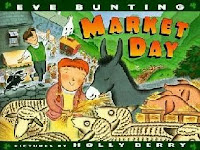
And thus the second edition of our in-house book fest, CROCUS 2010 - Celebrating Reading Culturally Unique Stories, draws to a close today.
As an insider, I recall the mail in early September, from Praba goading us to think a bit on what we could do for CROCUS 2010 and also capturing the 2009 fest for some of us newbies. We had 15 contributors versus the nine of the previous year.
After a quick round of brainstorming, it was very clear that Ranjani's idea to "explore uniqueness based on aspects that make up the crux or core of a culture" should be the theme for CROCUS 2010.
Being enthu cutlets/ pattanis, each of us would have churned out a review a day through this week but better sense prevailed. We did a max of 4 posts each.
Teams were formed and logistics sorted out.
The artwork for the evocative and much appreciated flyer was done by Lavanya and executed by Sheela with creative inputs from the creative design team comprising Meera, Praba, Tharini, and Vibha.
Consistency in look and scheduling (imagine over 40 posts in 7 days ) was superbly planned and executed by the planning team comprising Ranjani, Sheela and Praba. We brought you 6 reviews per day spread over 7 days.
The BR team ( Blog Relations team consisting of Artnavy, Sandhya,Chox, Madmomma, Kodi's Mom) publicized the event in a professional manner sending press releases to a network of publishers and bloggers such as Pratham, Papertigers, Zoe, Tulika, Starry, Monika and our blogs.
There was media coverage – features in The Hindu’s Young World, and an interview at Women’s Web featuring CROCUS and Saffron Tree. And mid-October, we even had a couple of feeler/teaser posts from Kodi’s mom and Sandhya.
On Oct 23rd, the stimulating CROCUSWORD 2010 by Meera was thrown open to participation. And with Ranjani‘s welcome post the celebrations officially began.
The reviews were organised by theme this CROCUS.
- Art including fine art, music, dance, theatre and craft
- Mythology and Fairy tales,
- Lifestyle including food, games and philosophy and
- Traditions & festivals
This we hope will help you revisit all reviews that belong to the chosen genre.
We traveled through time with an assortment of tales, modern and ancient, real and far fetched, through countries far and wide, some fun and some thought provoking. We pondered as to what possibly had been the authors’ and illustrators’ intention and motivation. We shared what we felt had gone on in the minds of both child and adult readers.
But whatever the style, content, genre or location, the books finally spoke the language of tolerance, generosity, consideration and oneness. In exploring the uniqueness of each culture, we also discovered unifying threads across the board.
We were enchanted by some wonderful people who shared the story behind their stories-through the main interview and via their answers to reader queries in the comments section. So much awe inspiring passion and talent -
From India –
- Author – Editor- Sandhya Rao of Tulika &
- Story teller & teacher - Geeta of Kathalaya
- From the US –
- Author Ferida Wolff
- Author T.V. Padma
- From Argentina-
- Illustrator Valeria Cis
Thank you all, for being so forthcoming, generous and most of all entertaining!
We were visited by some noted publishers such as Lee and Low books, much loved author Uma Krishnaswami and of course many bloggers, who share our love of books. THANK YOU FOR SUPPORTING US!
Going by the comments and emails we received, it was indeed an exciting and enriching week of discovery of many new/ rare gems and rediscovery of some old/ known ones. We note with satisfaction that our followers have increased and so has our traffic.
To adapt what Sandhya Rao had mentioned You, dear reader, are the star.
And remember, this is certainly not good bye to wonderful reviews and great books and interviews at ST. It is just that the pace will be a bit - no - a lot more relaxed. So make sure your grab a cup of coffee or tea and drop by at least once a week for reviews- old and new at Saffron Tree.
And Keep Reading!





















